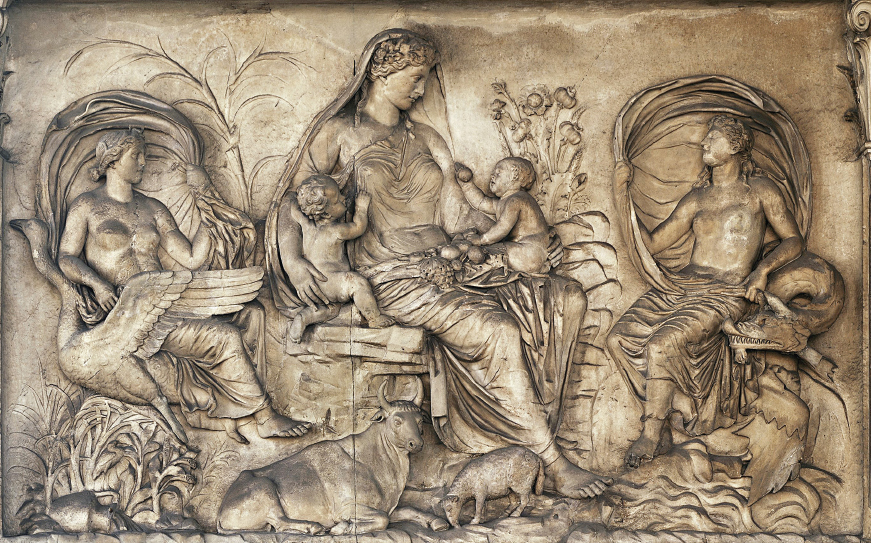Marriage and Morality
Augustus’s banishing of Ovid may have simply been an excuse to get rid of him, but concern with morality and with what were perceived as traditional Roman virtues was a matter not just for literature in Augustan Rome but also for law. Augustus promoted marriage and childbearing through legal changes that released free women and freedwomen (female slaves who had been freed) from male guardianship if they had given birth to a certain number of children. Men and women who were unmarried or had no children were restricted in the inheritance of property. Adultery, defined as sex with a married woman or with a woman under male guardianship, was made a crime, not simply the private family matter it had been.
In imperial propaganda, Augustus had his own family depicted as a model of traditional morality. (See “Picturing the Past: Ara Pacis.”) In fact, Augustus’s family did not live up to this ideal. Augustus had his daughter Julia arrested and exiled for adultery and treason. Although it is impossible to tell what actually happened, she seems to have had at least one affair after her father forced her to marry a second husband — her stepbrother Tiberius — whom she hated.
Same-sex relationships among men in Rome followed a variety of patterns: some were between social equals and others between men and their slaves. Moralists denounced sexual relationships in which men squandered family money or became subservient to those of lower social status, but no laws were passed against same-sex relationships. We do not know very much about same-sex relationships among women in Rome, though court gossip and criticism of powerful women sometimes included charges of such relationships, along with charges of heterosexual promiscuity and other sexual slander.

Ara PacisIn the middle years of Augustus’s reign, the Roman senate ordered a huge altar, the Ara Pacis, built to honor him and the peace he had brought to the empire. This was decorated with life-size reliefs of Augustus and members of his family, prominent Romans, and other people and deities. One side, shown here, depicts a goddess figure, most likely the goddess Peace herself, with twin babies on her lap, flanked by nymphs representing land and sea, and surrounded by plants and animals. (Scala/Art Resource, NY)> PICTURING THE PASTANALYZING THE IMAGE: What do the elements depicted here most likely symbolize?CONNECTIONS: The Ara Pacis was among a number of works of public art designed to commemorate the deeds of Augustus. Why might the senate and Augustus have commissioned such works? Can you think of contemporary parallels?
Why did Augustus retain the trappings of the republic and take care to avoid creating the appearance of radical change?
